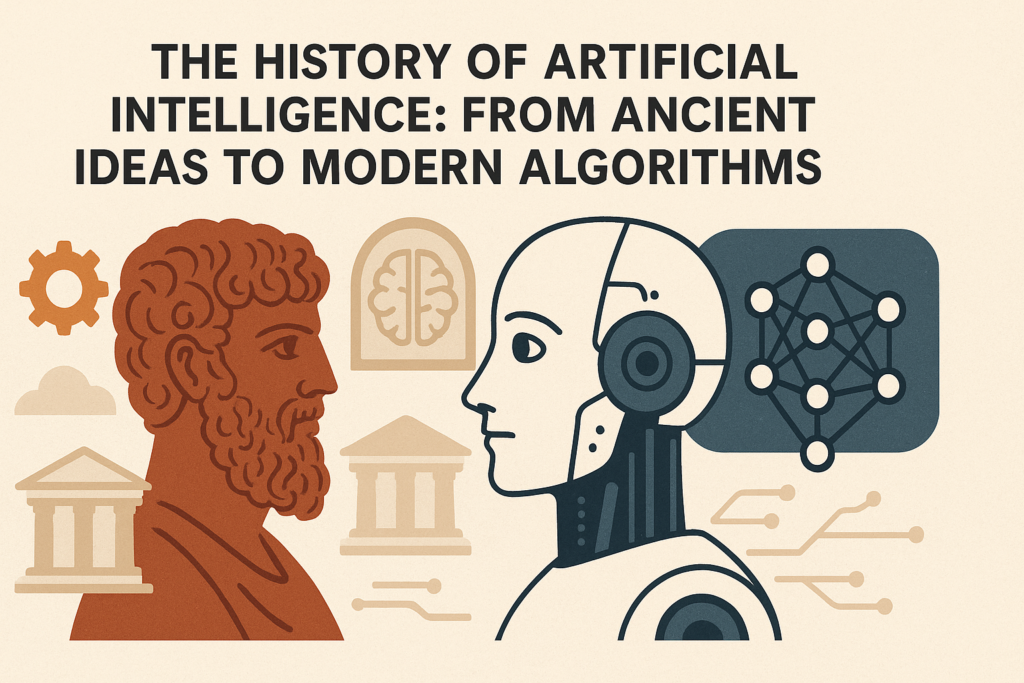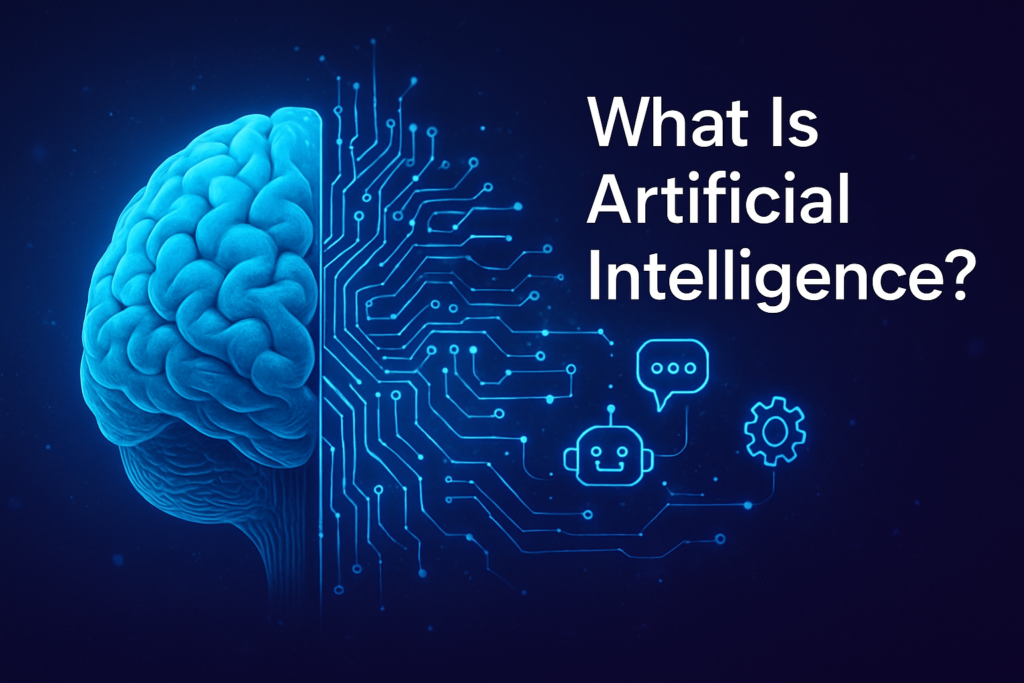Contents
- AI vs Human Creativity: Can Machines Be Truly Creative?
- Defining Creativity: Human vs. Machine
- The Mechanics Behind Machine "Creativity"
- Dimensions of Creativity: Measuring AI’s Capabilities
- Human Creativity: Irreplaceable Depth
- The Synergy: Augmented Creativity
- Real-World Applications in Marketing
- Can AI Ever Be Truly Creative?
- The Ethical Considerations
- Future Outlook: A Co-Creative Paradigm
- Conclusion: The Human Touch Still Matters
AI vs Human Creativity: Can Machines Be Truly Creative?
In the digital era, the intersection of artificial intelligence (AI) and creativity is no longer a distant philosophical query—it is a current reality confronting marketers, designers, artists, and technologists alike. As AI systems become increasingly adept at mimicking human behaviors, from writing poetry to composing music and designing logos, a pressing question arises: Can machines be truly creative, or is creativity an exclusively human domain?
This blog explores the nuances of creativity from both human and machine perspectives, evaluates how AI contributes to the creative process, and assesses the implications for industries, especially digital marketing, where creative innovation drives competitive advantage.
Defining Creativity: Human vs. Machine
Human creativity is typically characterized by originality, emotional depth, purpose, and the ability to connect disparate ideas to form novel concepts. It is often fueled by personal experiences, cultural context, and emotional complexity—elements that are inherently human.
On the other hand, machine creativity, powered by AI, is driven by data patterns, algorithms, and computational models. AI systems, like large language models or generative adversarial networks (GANs), can produce outputs that appear creative—whether that’s a new melody, a written article, or a visual design.
The core distinction lies in intentionality and consciousness. Humans create with a sense of purpose, driven by emotion, desire, and experience. Machines, by contrast, generate outputs based on probabilistic predictions and learned data structures—no emotions, no self-awareness.
Read More:- The History of Artificial Intelligence
The Mechanics Behind Machine "Creativity"
AI systems achieve their “creative” outputs through:
- Pattern Recognition: AI can process massive datasets, identify patterns, and extrapolate new combinations.
- Generative Models: Tools like GPT (language) and GANs (visuals) simulate creativity by generating novel outputs based on training data.
- Reinforcement Learning: AI can optimize outputs through trial and error, improving over time with feedback loops.
- Natural Language Processing (NLP): Enables machines to understand and produce human-like language for storytelling, scripting, and communication.
Examples:
- OpenAI’s ChatGPT can write poetry, short stories, and articles that mimic human prose.
- DeepArt and DALL·E generate artwork from textual descriptions.
- Amper Music composes background scores tailored to mood and theme.
These examples demonstrate that AI can replicate creative outputs, but does that mean it is being creative?
Read More:- Machine Learning
Dimensions of Creativity: Measuring AI’s Capabilities
Creativity can be measured through four key lenses:
- Fluency: Ability to produce a number of ideas or outputs.
- Flexibility: Ability to produce a variety of ideas across categories.
- Originality: Novelty and uniqueness of the idea.
- Elaboration: Depth and detail of the output.
AI excels in fluency and flexibility—it can generate a large number of outputs across different styles and categories. It struggles, however, with originality and elaboration that reflect emotional nuance or cultural context in a way that resonates deeply with humans.
For example, while AI can create an infinite number of logo designs, it lacks an inherent sense of why a brand story matters or how cultural nuances influence perception.
Human Creativity: Irreplaceable Depth
Humans are not just idea generators; they are emotional beings who infuse their work with subjective experiences, humor, irony, empathy, and abstract thought. These qualities are deeply rooted in consciousness and self-awareness.
Some key characteristics of human creativity:
- Emotional Intelligence: Creators often draw from personal trauma, joy, love, or conflict.
- Cultural & Historical Context: Creative works often reflect societal issues, philosophical views, and political movements.
- Ethics & Values: Humans choose what should be created, not just what can be created.
- Intent & Purpose: Human creativity often aims to inspire, provoke, or challenge norms.
A painting by Van Gogh is more than color and brushwork—it’s a glimpse into a tortured soul. A novel by Toni Morrison is not just a narrative—it’s a commentary on race, identity, and history. These are dimensions AI cannot access.
Read More:- Neural Networks
The Synergy: Augmented Creativity
Instead of framing the discussion as “AI vs. human creativity,” a more constructive lens is “AI + human creativity.”
In digital marketing, this synergy is increasingly evident:
- Content Generation: AI drafts blog posts or ad copy that human editors refine with emotional nuance and brand tone.
- Data-Driven Design: AI tools suggest design elements based on audience engagement, while designers infuse brand identity.
- Customer Journey Mapping: AI analyzes behavior, but marketers shape narratives to emotionally resonate with audiences.
- SEO Optimization: AI identifies keywords; humans weave them into authentic, compelling stories.
By combining AI’s speed and scale with human empathy and originality, brands can produce content that is both data-informed and emotionally compelling.
Real-World Applications in Marketing
1. Creative Ad Campaigns
Platforms like Persado and Copy.ai use AI to generate ad headlines and calls-to-action that maximize emotional engagement. However, marketers still define the overarching brand message and storytelling arc.
2. Visual Content Creation
Tools like Canva and Adobe Firefly use AI to auto-suggest design layouts, color palettes, or image compositions, empowering non-designers to produce creative assets. Designers can iterate faster, maintaining quality while scaling output.
3. Interactive Content
Gamification platforms now integrate AI to adapt quizzes, surveys, and games in real time based on user inputs. Marketers craft the core mechanics and rewards, while AI personalizes the experience.
4. AI-Enhanced Video Editing
Tools like Runway or Descript allow automated scene detection, subtitling, and background removal, streamlining video production workflows. Creative directors still conceptualize the narrative and emotional arc.
Can AI Ever Be Truly Creative?
To answer this, we must ask: What makes creativity “true”?
If creativity requires:
- Intentionality
- Self-awareness
- Emotional depth
- Conscious value judgment
…then current AI falls short. It does not intend, feel, or value. It predicts, imitates, and generates based on data.
Yet, if creativity is seen as:
- Producing novel and valuable outputs
- Combining existing ideas in new ways
- Solving problems with originality
…then AI certainly participates in creativity.
This distinction matters deeply in industries like marketing, where trust, authenticity, and emotion are vital. A campaign may use AI to craft a catchy slogan, but it takes human insight to ensure that the slogan aligns with a brand’s mission and speaks to its audience’s values.
The Ethical Considerations
As AI-generated content proliferates, several ethical questions emerge:
- Authenticity: Should brands disclose when content is AI-generated?
- Intellectual Property: Who owns the copyright to AI-created works?
- Bias: AI can replicate societal biases found in training data—should humans vet all AI outputs?
- Job Displacement: As AI assumes more creative tasks, what roles remain for human creatives?
For agencies like Nuform Social, navigating these issues is essential—not just for compliance, but to maintain client trust and creative integrity.
Read More:- Deep Learning
Future Outlook: A Co-Creative Paradigm
The future is not a zero-sum game between humans and machines. Instead, we are moving toward a co-creative paradigm, where AI tools serve as collaborators that augment human potential.
In this future:
- Marketers use AI to analyze audience sentiment and automate A/B testing, freeing time for deeper storytelling.
- Designers rely on AI for rapid prototyping, focusing their energies on emotional and cultural nuance.
- Writers partner with AI for first drafts and ideation, refining content to align with brand voice and customer values.
The most successful creatives will be those who understand both the art of storytelling and the science of AI tools, merging intuition with innovation.
Conclusion: The Human Touch Still Matters
AI is revolutionizing the creative process—but it is not replacing the human creator. It can enhance, accelerate, and scale creativity, but it cannot replicate the emotional depth, intent, and consciousness that make human creativity truly profound.
At Nuform Social, we believe in leveraging AI not as a replacement for human ingenuity, but as a partner in delivering data-driven, emotionally intelligent, and impactful digital experiences. As we integrate AI into our workflows—from content strategy to campaign optimization—we remain grounded in the belief that creativity is most powerful when it is human at heart, and AI-assisted in execution.
The real question is no longer “Can machines be creative?” but rather, “How can humans and machines create together?”



